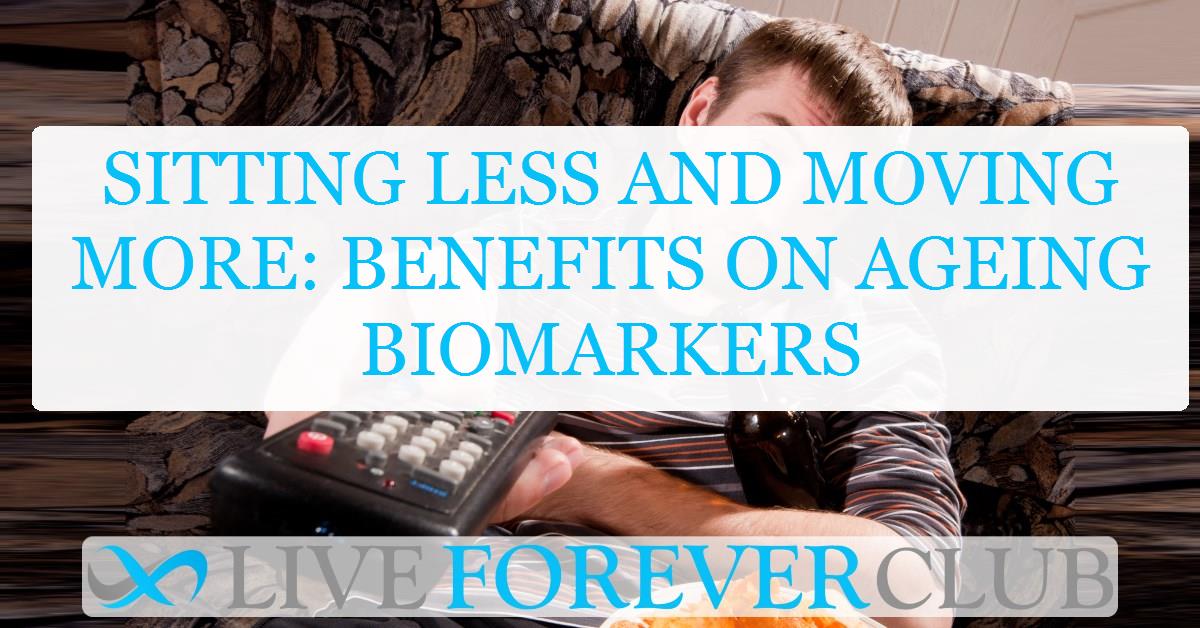In today’s fast-paced, technology-driven world, most people find themselves sitting for hours, often at desks, in front of screens. Recent studies reveal that prolonged sitting can harm health, increasing risks of metabolic and cardiovascular diseases.
The global pandemic has only exacerbated this trend, with many now sitting for more than eight hours daily. To counter this, physical activity remains a crucial lifestyle factor. But are current guidelines for exercise enough to offset the effects of extended sitting?
A recent study published in PLOS ONE titled "A Twin-Driven Analysis on Early Aging Biomarkers and Associations with Sitting-Time and Physical Activity" explores this question by examining biomarkers associated with early ageing and how both sitting time and physical activity influence these indicators.
Why Prolonged Sitting and Physical Activity Matter for Ageing
Cardiovascular health is key to ageing healthily, as conditions like heart disease and stroke rank among the top causes of death globally. Two critical biomarkers often used to assess cardiovascular risk are the total cholesterol/high-density lipoprotein (TC/HDL) ratio and body mass index (BMI). High TC/HDL ratios signal an increased risk for heart disease, while high BMI levels are linked to obesity and metabolic issues.
With more people adopting sedentary lifestyles, sitting for extended periods is now common. Studies suggest that sedentary behavior contributes to obesity and cholesterol imbalances. This twin-driven analysis aimed to understand whether vigorous physical activity could counter these sitting-related health risks, offering a unique approach to studying the balance between sitting, exercise, and their cumulative impact on ageing.
Understanding the Twin Study Approach
This research uses data from the Colorado Adoption/Twin Study of Lifespan (CATSLife), which includes both monozygotic (identical) and dizygotic (non-identical) twins. The study recruited over 1,300 participants aged between 28 and 49. Twin studies are valuable because they help separate genetic influences from environmental ones, such as lifestyle choices.
By comparing health outcomes between twins, especially those with varying levels of physical activity and sitting time, researchers could analyze the extent to which genetics and lifestyle behaviors contribute to early ageing biomarkers.
Participants reported their weekly sitting hours, the type of physical activities they engaged in, and their intensity, rated by Metabolic Equivalent Task (MET) scores. Vigorous activities included intense exercise routines, while moderate ones included lighter activities like brisk walking. Researchers then analyzed participants' BMI and TC/HDL ratios to understand the effect of sitting and exercise.
Prolonged Sitting, Physical Activity, and Ageing Biomarkers
The study found that both TC/HDL and BMI showed age-related increases, with prolonged sitting linked to higher levels in both biomarkers. For individuals who performed vigorous physical activity, however, the ageing markers looked significantly better. Here’s what the study revealed:
Prolonged Sitting Increases Ageing Biomarkers
Participants with higher sitting times showed increased TC/HDL ratios and BMI, highlighting the adverse impact of a sedentary lifestyle. The results indicate that prolonged sitting might accelerate early signs of cardiovascular and metabolic ageing.
Physical Activity Counteracts Sitting Risks—To a Degree
Engaging in at least 30 minutes of vigorous physical activity each day appeared to mitigate some of the negative effects associated with sitting. For instance, individuals who exercised vigorously for 30 minutes daily had a TC/HDL ratio comparable to that of someone five years younger who did not exercise. The impact on BMI was even more pronounced; a 30-minute daily workout provided a BMI equivalent to that of someone ten years younger.
Co-Twin Control Analysis Supports Lifestyle Impact
By using a co-twin control analysis, researchers compared health markers within twin pairs. They found that vigorous activity significantly lowered TC/HDL and BMI in one twin compared to the other when sitting time was consistent. This result supports the idea that lifestyle choices, such as engaging in vigorous exercise, can help slow ageing signs, even for those genetically predisposed to cardiovascular issues.
Why Current Physical Activity Guidelines Might Fall Short
According to the U.S. Department of Health and Human Services, adults should aim for 150 minutes of moderate aerobic activity or 75 minutes of vigorous exercise weekly. However, this study suggests that these guidelines may not be enough for those who sit most of the day. Prolonged sitting times—common in today’s work environments—require higher activity levels to counter potential health risks fully.
For instance, the study’s findings suggest that people sitting an average of 8.5 hours a day may need more than the minimum recommended exercise to maintain optimal TC/HDL and BMI levels. The benefits of vigorous activity appeared most significant, implying that more than just moderate physical activity might be necessary for health protection in sedentary individuals.
The Public Health Implications of the Study
These findings hold implications for public health initiatives. Given the increase in sedentary behavior, the research suggests updating physical activity guidelines to address sitting time directly. Future guidelines could encourage more frequent breaks from sitting or add vigorous exercise recommendations for those who cannot avoid prolonged sitting.
Moreover, workplaces could benefit from promoting a healthier lifestyle by incorporating activity into the workday. Small changes, such as standing meetings, walking breaks, or short exercise intervals, could reduce sitting time and encourage movement, helping mitigate the effects of a sedentary lifestyle on early ageing.
Conclusion
This twin-driven study emphasizes that reducing sitting time and incorporating vigorous physical activity are essential for combating early signs of ageing. For individuals with desk-bound routines, incorporating 30 minutes of intense exercise each day could significantly impact biomarkers like TC/HDL and BMI, aligning them with levels typically seen in younger individuals. While sitting has become nearly unavoidable in modern life, exercise offers a practical approach to offset the adverse effects.
The study’s results highlight a clear need to rethink how physical activity guidelines address sedentary behavior. For those who spend hours sitting each day, it may not be enough to engage in moderate exercise. Instead, vigorous activities may be the key to achieving healthier ageing and reducing the risk of age-related diseases.
For those looking to adopt healthier habits, this research provides valuable insights. Aiming to move more and sit less could benefit both current and future health. This study reinforces that while genetics play a role in ageing, lifestyle choices—especially when it comes to physical activity—can be powerful tools for promoting a longer, healthier life.
The study is published in the journal PLoS ONE. It was led by Ryan Bruellman from the University of California Riverside.






